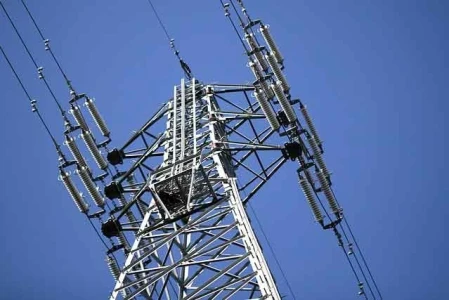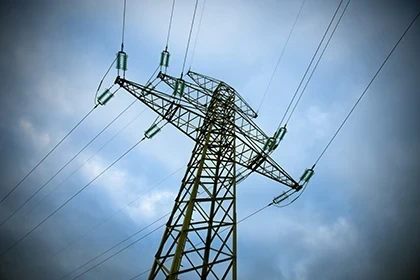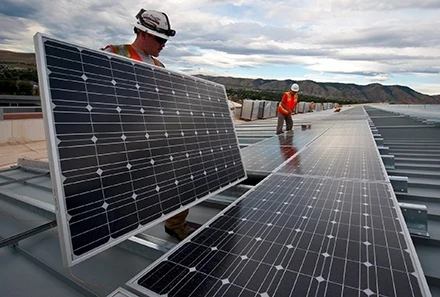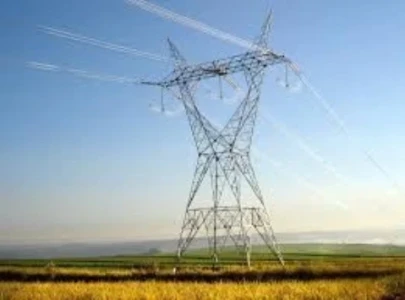ES Foundry Opens Solar Factory in South Carolina

As the U.S. strives to strengthen its domestic renewable energy sector, ES Foundry, a new player in solar cell manufacturing, is helping to reshape the landscape. The company recently celebrated the grand opening of its cutting-edge facility in South Carolina, marking a significant step toward onshoring solar production in the country. The facility, which spans over 400,000 square feet, is projected to employ around 500 people by mid-2025 and produce up to 3 gigawatts (GW) of crystalline silicon photovoltaic (PV) solar cells annually by the third quarter of the same year.
ES Foundry’s entrance into the solar manufacturing industry is timely, as the U.S. faces a growing need for domestically produced solar panels. Currently, the only company producing solar cells in the U.S. is Suniva, which had suspended its operations for several years but resumed production in 2023. ES Foundry’s state-of-the-art solar cells are designed to meet the increasing demand for high-quality, domestically produced modules that are eligible for financial incentives under the Inflation Reduction Act (IRA).
The solar cells produced by ES Foundry are bifacial Passivated Emitter and Rear Contact (PERC) cells, known for their efficiency and reliability. These cells are designed to help companies meet the growing demand for clean energy in the U.S. and take advantage of government incentives aimed at boosting domestic solar production. ES Foundry’s CEO, Alex Zhu, emphasized that the company's operations represent more than just a factory—they symbolize a path toward a more sustainable, energy-secure future for the United States.
The company's success also underscores the significant shift happening in the U.S. solar manufacturing sector, driven in large part by policies like the IRA. The incentives provided under the IRA are proving crucial in bringing solar production back to U.S. soil, which has long relied on cheaper imports from countries like China and Southeast Asia. Despite the challenges, the demand for American-made solar panels continues to rise, especially as the country pushes to meet clean energy targets and reduce dependence on foreign manufacturing.
While ES Foundry’s South Carolina facility is a major development, it is not the only player driving the shift toward domestic solar production. Other companies, such as Qcells, are also ramping up their manufacturing efforts in Georgia, aiming to contribute significantly to the U.S. solar supply chain. Qcells is building one of the largest integrated solar manufacturing facilities in the country, which will produce ingots, wafers, and cells, further bolstering the country’s capacity to meet the growing demand for renewable energy solutions.
Despite the promise of domestic manufacturing, the U.S. solar industry still faces challenges, particularly when it comes to competing with the lower cost of overseas solar panels. Chinese manufacturers dominate global production, offering panels at prices that American companies struggle to match. In fact, Chinese solar panels can sell for as little as $0.03 per watt, while the most competitive U.S.-made models cost around $0.30 per watt. This price gap, combined with trade tariffs and ongoing regulatory challenges, complicates efforts to build a competitive domestic market.
However, the long-term benefits of onshoring solar manufacturing—such as job creation, energy security, and the ability to more easily integrate solar energy into the nation’s grid—are driving the push for more domestic facilities. Industry analysts believe that while the cost of U.S.-made solar panels may remain higher for the time being, the increasing availability of domestically produced solar cells will help to drive down prices in the future.
As the U.S. solar industry evolves, ES Foundry’s new facility represents a hopeful sign for the future of renewable energy in America. The company’s success could inspire more manufacturers to follow suit, bringing the country closer to its goal of becoming a leader in the global solar energy market. With continued support from policies like the IRA and growing demand for clean energy, the U.S. is on its way to building a sustainable, self-sufficient solar industry that can meet the needs of both the domestic and international markets.









